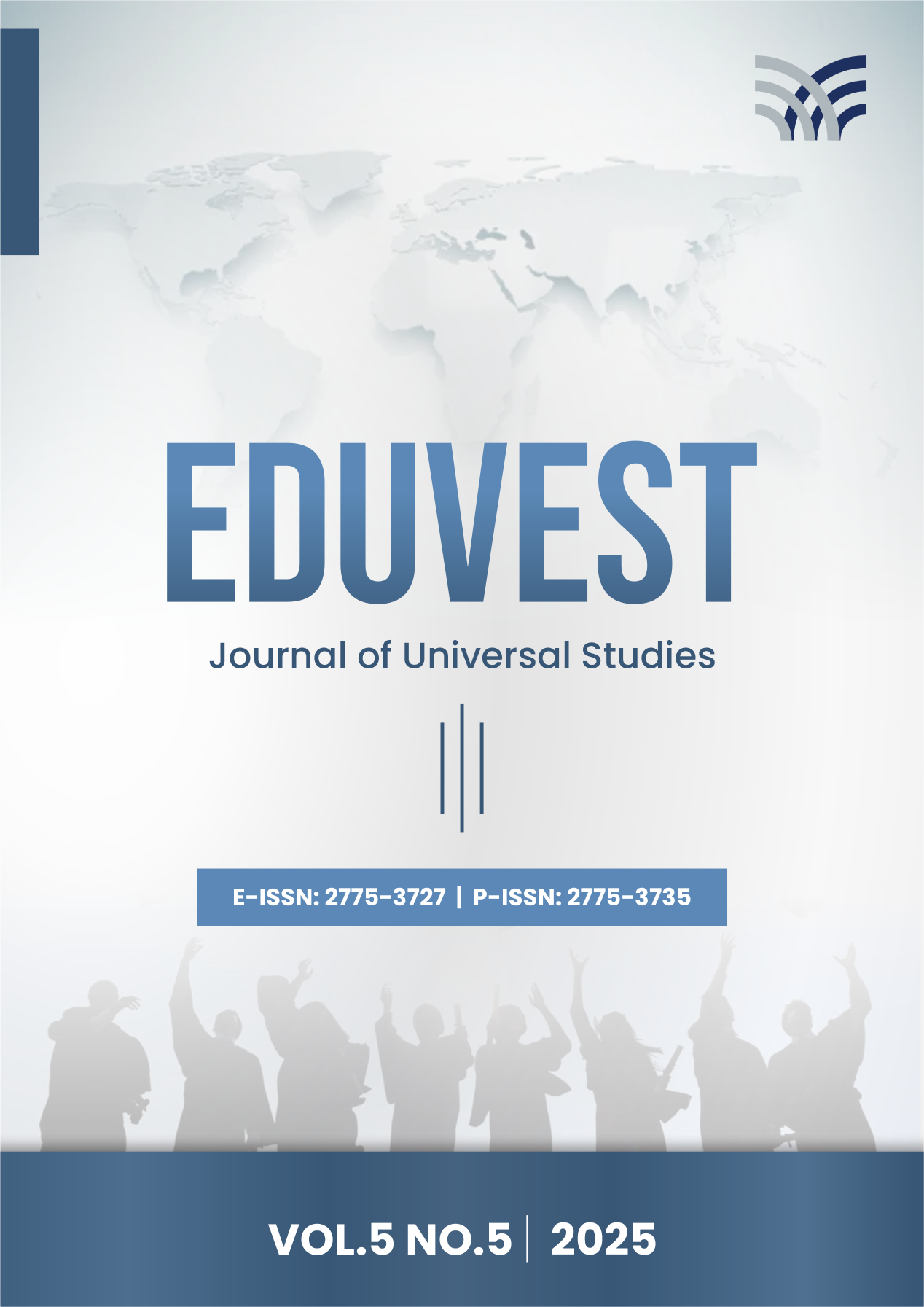Analysis of Substrate Characteristics of Seagrass Habitat in Doreri Bay Manokwari District
DOI:
https://doi.org/10.59188/eduvest.v5i5.50188Keywords:
Substrate, Seagrass, Correlation of Substrate and Seagrass, Doreri BayAbstract
This study investigates the characteristics of substrates in seagrass habitats within Doreri Bay, Manokwari District, and their relationship with seagrass species composition. The research aims to assess the type, density, and percentage of seagrass cover, alongside the substrate characteristics in the region. Data were collected between March and May 2020 using the line transect method, while water quality data were gathered in situ. The study found seven seagrass species in Doreri Bay, with densities ranging from 1058 ind/m² to 1457 ind/m² and a cover percentage between 17% and 30%. Substrate types included calcareous, gravel, sands, and silt, each influencing the distribution of seagrass species. Principal Component Analysis (PCA) revealed correlations between specific seagrass species and substrate types: Cymodocea rotundata and Halodule pinifolia correlated with silt, while Thalassia hemprichii was associated with fine sand substrates. The results indicate that substrate characteristics play a significant role in seagrass distribution and biodiversity in Doreri Bay. The study's findings have important implications for the region's management and conservation of seagrass ecosystems, suggesting that targeted efforts to protect specific substrate types can support seagrass health.
Downloads
Published
How to Cite
Issue
Section
License
Copyright (c) 2025 Feldy Febrian Korwa, Gandi Y.S Purba

This work is licensed under a Creative Commons Attribution-ShareAlike 4.0 International License.











